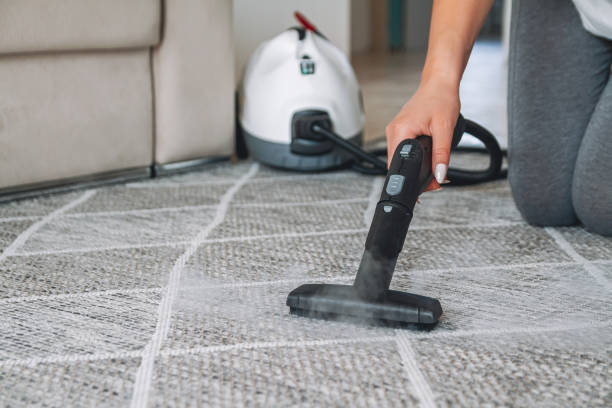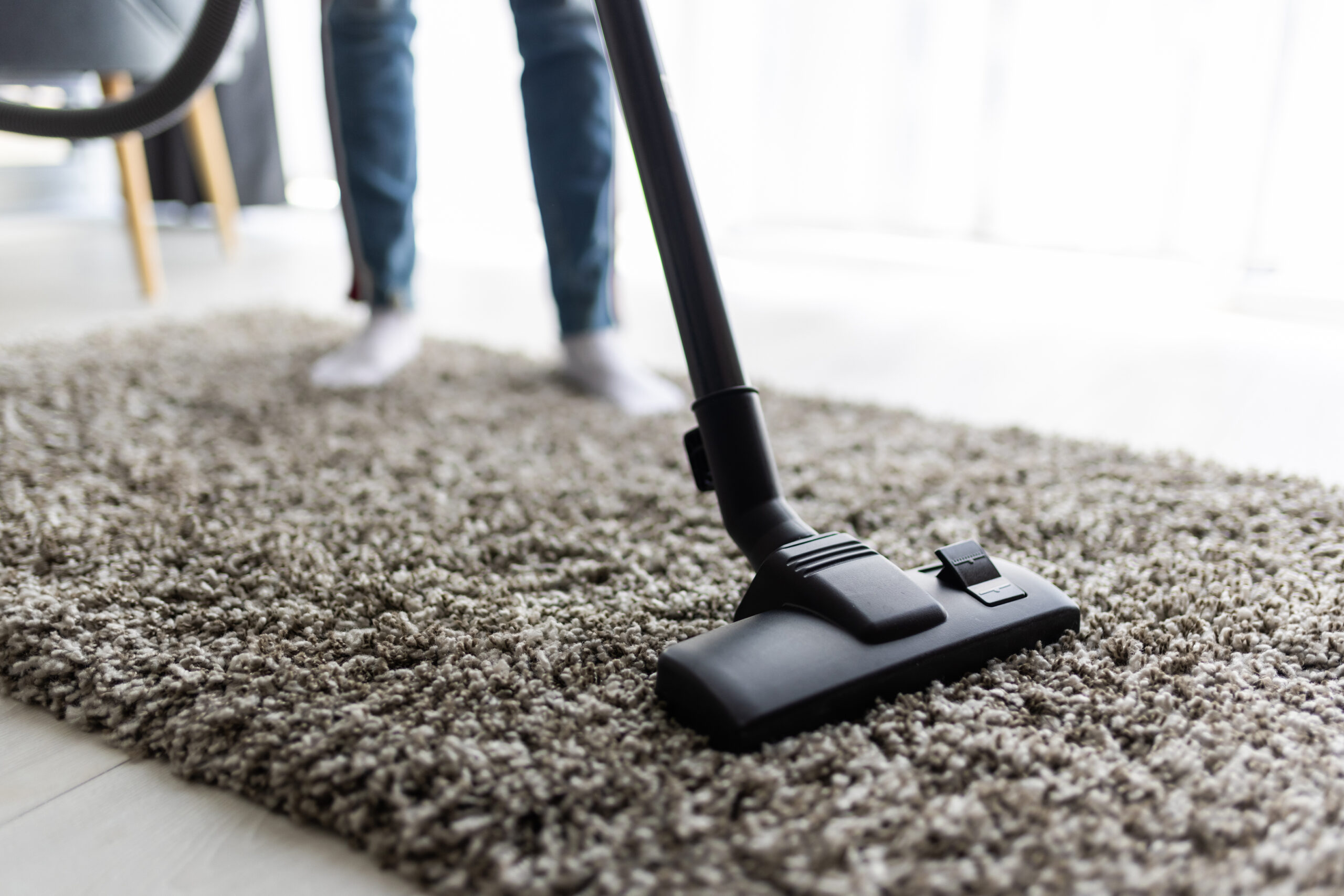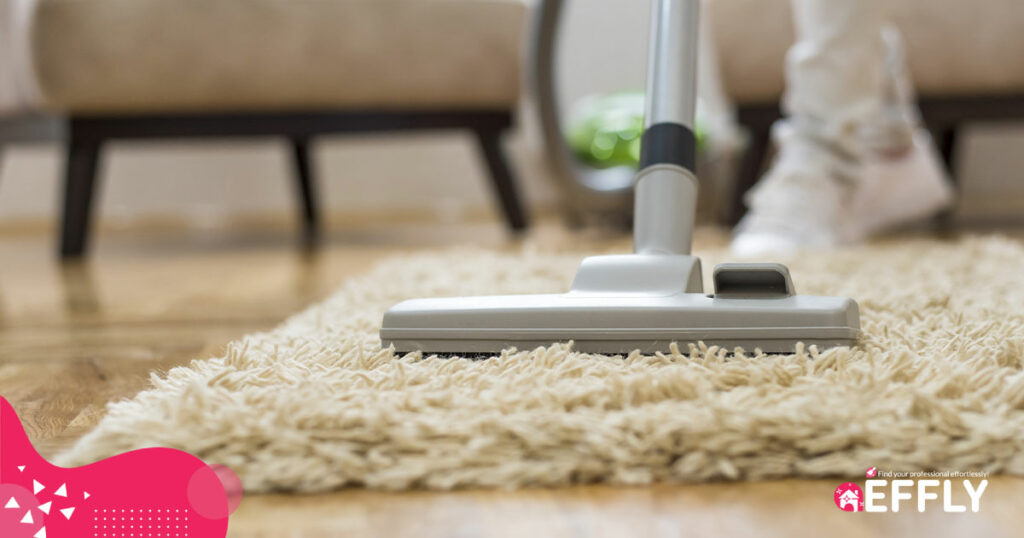Although many types of flooring are available, like vinyl, wood, stone, laminate, cork, and bamboo, carpets remain popular. In Australia, carpet manufacturers have seen a rise in demand, especially during the pandemic. Since people cannot travel, they spend more on home improvement projects, including changing their floor covers to carpets.
One of the reasons people love carpets is because of their warmth and softness. Carpets require less maintenance and upkeep compared to hard floors too. When we say less maintenance, we don’t mean you do not have to clean them. But, of course, you need to. Frequent vacuuming and deep cleaning will do the trick to keep the carpet looking clean and fresh.
Even if you do this regularly, your carpet can get stained and dirty from spills, splashes, and messy accidents. As a result, you may need carpet cleaning professionals to take care of it.
But don’t call any professional yet until you finish reading this. Then, read on as we provide you with all the relevant information about carpets, valuable tips on how to clean your carpet, and many more!
All Things Carpet
Carpets come in a variety of styles, patterns, and colours. It is the most popular floor covering because it is inexpensive, stylish, and easy to install. Plus, it is soft, warm, and a good sound blocker. Carpets also offer additional safety because they offer a non-slip surface.
It is not only an affordable flooring option; most are treated for resistance against stains, static, and dirt. In addition, it makes it easy to clean and maintain.
You should also read these 8 Dirty Carpets Secrets You Need to Know. It’s a great resource to know more about carpets.

The Four Main Elements of a Carpet
To understand your carpet better, let us start from the top with the four main elements of every carpet.
- Fibre
- Pile
- Grade
- Backing
- Carpet Fibres
Carpets are made from different types of fibres with varying thicknesses. It is achieved by spinning individual strands of yarn fibre together. Each strand is called a ply; the more you have, the thicker the fibres.
For instance, a 3-ply carpet means that each fibre of the carpet has three strands of yarn spun together and secured at the back.
Carpet Pile
The carpet pile refers to how the fibres are arranged in loops (yes, you got it right!). It means how they are attached to the carpet backing twice. The famous Berber carpets are low and durable because they are thick, looped fibres. That is why it is also called a “low-pile carpet.”
Carpets with shorter and denser piles are suitable for high-traffic areas since the fibres are not prone to compression and damage.
Carpet Grade
Carpet grade is the term used to describe the quality of the carpet. Many factors determine the grade, mainly face weight, fibre, and construction. Knowing the carpet’s grade is vital because it determines how long it will last.
There is no single standard system to indicate the carpet’s grade. It is more like a self-labelling system. That means the highest grade is not often the most desired. For example, in residential and commercial buildings, they frequently use the lower-grade types because they know the carpet will have heavy traffic daily. Furthermore, lower-grade carpets are cheaper to replace.
Face Weight
Now, about-face weight. You do not often hear this term, but it’s good to know it. This term is similar to thread count on sheets and refers to the amount of yarn used to make the pile. Better quality carpets have high face weight.
Carpet Backing
There is no explanation for this other than the back of the carpet (It makes sense, right?).
Carpet backing is made up of two parts:
- The primary backing is where the fibres are attached.
- The secondary backing creates a buffer between the floor and the carpet padding.
This part of the carpet is made from two types of materials: Natural or Synthetic.
Now, let us dive deep into one of its essential elements in carpet cleaning.
Types of Carpet Fibres
You have endless options when it comes to carpet fibres. It can be overwhelming. But when you know how each fibre feels and reacts to stain and wear and tear. The fibres also tell a lot about the carpet\’s durability.
Nylon: It is the most common synthetic fibre choice for carpets. There is a reason why this is so. Nylon is affordable, attractive, and surprisingly durable. It also does not harbour moulds and mildew and is exceptionally stain-resistant. However, nylon can create a lot of static. It would help if you got it treated before installation.
Polyester: Like nylon, polyester can be a great choice and is a bit cheaper. It is moisture-resistant, stain-resistant, and has good wearability. It offers value for money but is not as resilient as nylon.
Cotton: Like in clothing, cotton is ultra-soft and completely organic. Hence, it is the most expensive carpet type to buy. But there are many pluses why you are paying that much for cotton carpets. First, they are easy to clean. However, it does not do well with stains and is prone to fading.
Wool: This is one of the best choices for your floor carpets as it is a high-quality fibre that lasts long and is quite strong. It also does not quickly get stained or dirty. However, wool carpets are hard to maintain, and the colours can fade quickly.
Sisal: These carpet fibres come from the Sisal cactus plant and are rough. But it makes super-strong carpet fibres. It is an excellent carpet for the outdoors, like your patio.
Triexta: It is a relatively new fibre in the carpet world. It is partly made from corn, making it a renewable and sustainable carpet fibre. Triexta is similar to nylon or polyester, but vacuuming can be challenging. Carpets from this fibre are super dense because they require three times as many fibres as other carpets.
Polypropylene or Olefin: It is a synthetic fibre made from plastic. It is super water-resistant and suitable for areas prone to moisture. However, it is not as resilient as nylon and is sensitive to friction. They are slightly waxy to the touch too.
Types of Carpet Piles
As mentioned above, different types of carpet piles arise from how the carpet fibres are attached to the backing. It resulted in different cuts, heights, and textures. Here are the three main types of carpet piles.
Cut Pile: This type of pile is where the pieces of yarn are cut at a specific height and twisted into tufts. The result is a soft carpet like plush, Saxony, or Frieze carpets.
Loop Pile: This is the opposite of a cut pile. In loop piles, the fibres are connected to the backing twice. It forms carpet loops instead of cuts. The most notable loop pile carpets include Berber and high-low Loop Carpet.
Cut-and-Loop Pile: This is a combination of both cut and looped fibres. Using both cut and loop yarns creates the design on the carpet as it results in differences in height and texture. As a result, the carpets are trendy and contemporary.
There are many other things to know about carpets, but we should limit them to focusing more on what matters most carpet cleaning!

What is Carpet Cleaning?
While some types of carpets are resistant to stains, you still need to clean your carpet well to make it look fresh and clean. Carpet cleaning is not just a process to keep your home clean; it also prolongs the life and performance of your carpets.
Most people think they only need to clean their carpet whenever they see notable stains. Well, it’s not necessary. It would help if you cleaned them every 12-18 months. It also requires frequent cleaning depending on the type of carpet and the manufacturer\’s recommendation.
Methods of Carpet Cleaning
When we say carpet cleaning, most people think about steam cleaning. But for professional carpet cleaners, there are plenty of techniques, and each has advantages and disadvantages.
You may never need to use these techniques; it pays to know and understand your cleaner\’s recommendation. After all, an educated consumer is always a happy consumer. You will not only save money but get the results you are after.
You might be asking why there are plenty of cleaning techniques for carpets. The reason is that it is a textile that comes in all shapes and sizes. Therefore, each type needs unique solutions.
Here are the five most common types of professional carpet cleaning techniques.
Method 1: Steam Cleaning or Hot Water Extraction
We are familiar with steam cleaning, the most common professional carpet cleaning technique. This method uses high-pressure hot water to penetrate the carpet fibres and break down the deep-seated dirt and bacteria.
The machine used in steam cleaning is a specialized vacuum cleaner. Hence the name hot water extraction.
In steam cleaning, the process begins with applying a carpet cleaning agent to the targeted area. Then, using a brush breaks up the dirt for steam cleaning. The process may take an hour to complete in an average home or two for the carpet to dry completely. Office and other commercial properties may take longer.
Method 2: Encapsulation
It simply refers to using an absorbent compound in cleaning. Synthetic detergents are used as a base that eventually crystallizes into foam when dried. First, it loosens the dirt particles in the carpet fibre. Then, it encapsulates them into powder form, which can be easily vacuumed or brushed later.
It is a relatively new carpet cleaning technique. It is better than carpet shampooing as the latter uses more water, resulting in a faster drying time. Its drawback, however, is that it cannot clean heavily soiled carpets thoroughly because of its limitations.
Method 3: Bonnet Cleaning
This carpet cleaning method has a good surface cleaning result; the process is primarily on the top part of the carpet fiber. It uses a heavy-duty motorized machine with a spinning pad soaked in a cleaning solution to absorb dirt from the carpet\’s surface.
This process is commonly used in hotels as it is a quick way to clean the carpet in heavy traffic areas. However, the downside of bonnet cleaning is it accumulates chemical residue on the carpet since the pressure from the spinning pad pushes the chemicals down the fibres causing them to be embedded deeper.
Method 4: Carpet Shampooing
Carpet Shampooing is the oldest professional carpet cleaning technique known to man and is still used today. However, the process has evolved in terms of the machine used.
Today, carpet cleaning involves applying a foaming substance and using a brush machine to work on the carpets. That is the shampooing part. Finish this method using a wet vacuum to remove the shampoo and the attached dirt.
It takes some time for the carpet to dry, and another round of dry vacuuming is needed to remove the leftover residue.
Method 5: Dry Cleaning
Compound or dry carpet cleaning is the latest addition to carpet cleaning techniques. It is becoming increasingly popular because it is practical, convenient, and does not require drying time.
The cleaning process begins with applying a cleaning compound powder to the bottom of the carpet with a motorized rotating brush machine. It opens the carpet fibres, allowing the compound to work inside.
This carpet cleaner is typically made with biodegradable material and works like micro-sponges. The cleaning agents absorb the dirt in the carpet and will be removed thoroughly during the cleaning. A professional strength vacuum cleaner is used as a finale.
The Benefits of Carpet Cleaning
Your carpet needs to be appropriately cared for. Along with frequent vacuuming and spot cleaning, you also need your carpet professionally cleaned. It not only extends its life but also brings a host of benefits.
Improved Health
Your carpet can harbor allergens, dust particles, and bacteria. Suppose you or any member of your household has any of these issues. In that case, the airborne particles on your carpet can lead to serious health concerns like asthma attacks and allergies.
Vacuuming can help remove dirt, bacteria, and dust mites, but they accumulate over time, increasing the risks. Professional carpet cleaning is better because it can effectively remove allergens, bacteria, and pathogens on your carpet.
Enhanced Airflow
Although your carpet is on the floor (the lowest point in your home), it can also impede indoor airflow. As the carpet becomes clogged with dirt, dust, and debris, the airflow can get compromised, especially in the areas along the wall.
The rooms in your home become unpleasant and stuffy when the carpet is clogged with dirt and dust. Regular vacuuming will not remove all of the debris. That is why you need to have them regularly cleaned. With clean carpets, you will have improved air quality and airflow.
Improved Look and Feel
Having your carpet cleaned professionally will help improve its look and feel. As dirt and dust accumulate in the fibres, the fibres can become matted, making the carpet look old and worn. It also feels rough and flat, even with padding underneath.
Expert cleaning helps to keep the dirt and dust from tearing away at the fibres in the carpet, which ultimately makes them look better and feel softer for a more extended period.
Signs that You Need Professional Carpet Cleaning
Carpet cleaning is time-consuming and tedious. You need to spray, scrub, rinse, and dry every inch. Professional-grade equipment and techniques can take the job out of your hands, removing deep-down grime and stains and extracting any water or solvent from its fibres.
How do you know that it’s time for professional carpet cleaning? Consider these eight signs.
- You can’t remember the last time you had your carpet cleaned. It is recommended that carpets be cleaned at least once a year. If you have small children or pets, you should increase the frequency as the risk of wear and tear and messes increases.
- Your carpet is fading, or you can’t remember your carpet\’s natural colour. If your carpet looks a few shades darker than you remember, it’s due for a cleaning. The discolouration is the most obvious sign that it needs cleaning. Professional carpet cleaners have powerful equipment with better water pressure.
- It’s got stains that won’t budge. Muddy paws and spills leave their mark on carpets. Professional carpet cleaning is the best way to address these stains immediately. Pet stains are hard to remove, and no amount of treatment, blotting, or drying can remove them.
- It sends off musty smells. Carpet fibres can hold onto odours and trap them. Vacuuming with scented baking soda or carpet cleaners will only mask the smells and temporarily dissipate the odour. However, lingering smells require deeper cleaning. The steam-powered extraction that professional cleaners use is better at removing these tough odours.
- It does not feel right. Take a feel test on your carpet. A dirty carpet will feel rougher and matted down. Also, if you rub your hand across the carpet, it feels gritty because of dirty sand, pet hair, and other debris. It needs professional cleaning that regular vacuuming cannot.
DIY Carpet Cleaning Techniques
You still keep your carpets clean without bringing in heavy cleaning equipment. However, there are efficient ways to keep your carpet clean without machinery.
- Remove loose dirt and dust with a stiff-bristled broom and a dustpan. It is an easy way if you have a low-pile carpet. For thicker, high-piled, or shag carpets, you need to have more patience and sharp eyes as the dirt can easily get embedded in its fibres.
- Refresh and disinfect the fibres of your carpet without renting a steam cleaner using a simple homemade solution and scrub brush. Mix one part white vinegar with three parts water. Dip the bristles into the solution and rub them into the carpet. Massage them into the fibres and follow up with a cloth to help blot excess moisture.
- Do spot cleaning by tackling the spills and stains on the carpet simultaneously. For fresh stains, always blot the area with a highly absorbent cloth. Rinse the spot with club soda to loosen it before it sets in. Continue to blot at the stain until it rubs off.
- Remove pet fur with a lint brush to tidy the carpet between cleanings. Use the brush in areas where the build-up is visible. Also, brush and groom your pet more often to clean your carpets.
Key Takeaways
Your carpet is the first thing many will get when walking into your home or office. So, it is crucial to make sure it stays clean. Daily maintenance and routine professional cleaning can ensure that your carpet and home are fresh, clean, and healthy.
Whether you use a professional carpet cleaner or clean yourself is always a personal choice. And if you find the best carpet cleaning technique for your type of floor cover, you will enjoy a clean carpet while extending its lifespan.
Explore our related video content on the same topic:

A versatile writer and passionate content creator who brings her creativity to life across various social media platforms. Whether writing blog articles or preparing social media posts, Guia is always up for the challenge. And when she’s not working, you’ll likely find her unleashing her artistic flair on the canvas or tending to her beautiful house plants.
